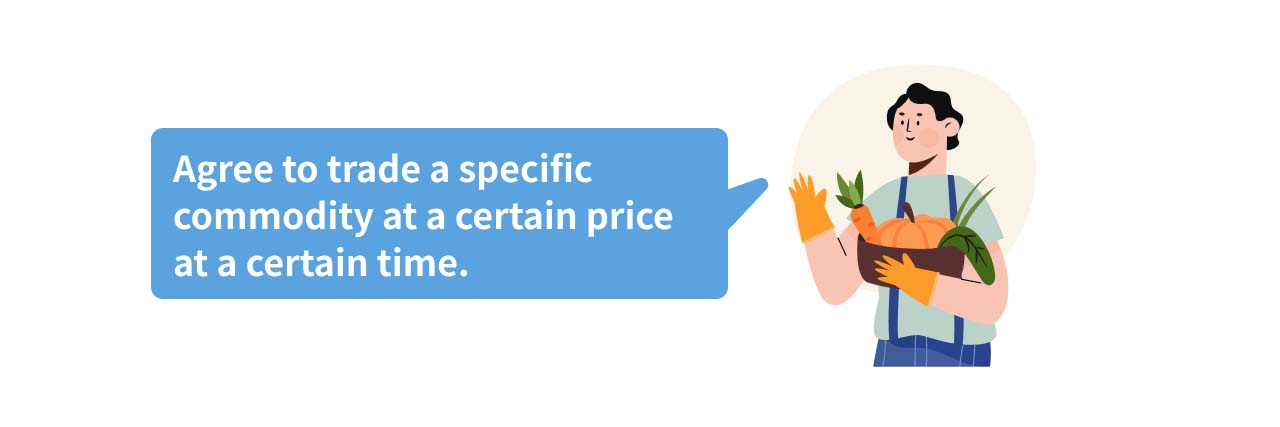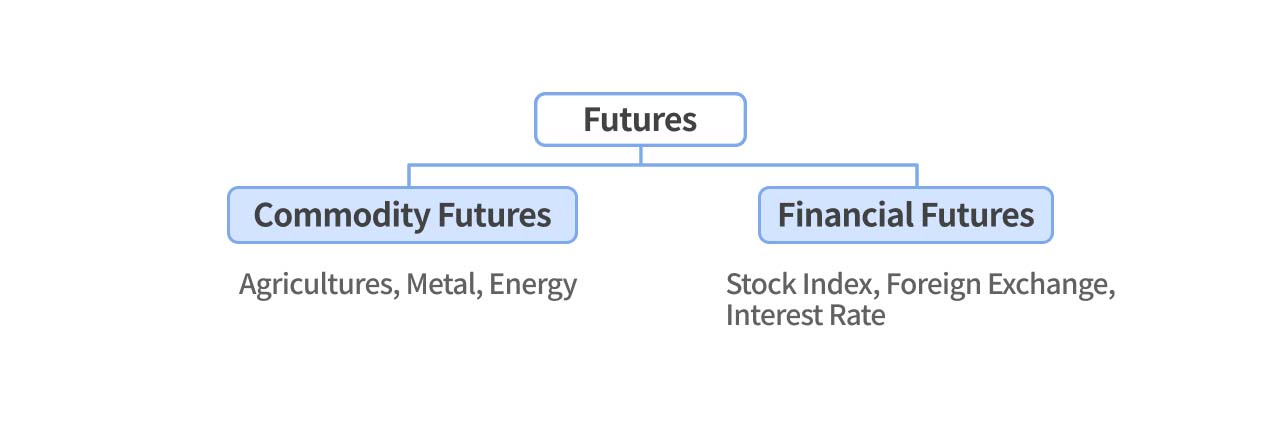What are Futures
How to Trade Future Commodities
Origin of Futures
Initially, futures were extensively used for agricultural products, as their yields are significantly affected by weather conditions. Since weather-induced crop losses could be substantial, both buyers (such as processing factories) and sellers (farmers) of crops would like to seek stable prices in the future to ensure consistent profits.
Content of Futures Contracts

To provide stable prices for buyers and sellers in the future, futures contracts were created. In simple terms, futures are contracts for trading commodities in the future. The buyer and seller agree to trade at a specific "time" and a specific "price". Therefore, futures contracts have two main characteristics: time and price. The parties involved would consider these characteristics before finalizing the trade. Once agreed, the parties will trade at the agreed price and time specified in the futures contract. For example, the buyer and seller of agricultural products may assess the future price trends of the crop and draft a futures contract with specific prices and date. Food Processing Plant A and Farmer B may agree to trade 1,000 kilograms of apples at $25 per kilogram in six months. This agreement aligns with the essence of a futures contract.
Since futures involve trading at a specific "time" and "price" in the future, they could serve as a "hedge" in certain situations. In the above example, the farmer B can anticipate a certain quantity of "spot" goods (crops) in the future, while the processing plant A has a future demand for these goods. By drafting a futures contract to lock in the future transaction price, both parties can avoid the risks of price fluctuations.
Evolution of Futures
As futures trading become more active, the need for standardized contract content emerged. In the past, a futures contract became valid at the moment both parties reached an agreement. However, due to varying definitions of product quality, mid-trade transactions for these customized futures contracts were often difficult. Therefore, standardized futures contracts would solve this issue. With fixed contract terms, both parties are allowed to mutually agree on transactions, making the futures market more active.
Types of Futures
Overview of Futures Contract
Futures contracts can be broadly classified into two main types: commodity futures and financial futures. Below are some commonly traded futures contracts traded in the market.

Commodity Futures
As discussed above, futures contracts initially originated from forward commodity trading in agricultural products. Therefore, commodity futures are the earliest forms of futures contracts. Following are some major categories of commodity futures.
1. Agricultural Futures
Agricultural futures mainly involve trading natural grains, soft commodities, and meats. The supply of natural agricultural products is greatly affected by weather, creating a demand for forward price trading. Common agricultural futures include wheat, corn, soybeans, coffee, sugar, cotton, live cattle, pigs, and so on.
2. Metal Futures
Metal futures primarily trade mined metals and can be categorized into precious metals and industrial metals. Precious metal futures include gold and silver, while industrial metal futures include copper, aluminum, and other metals commonly used in industrial processing.
3. Energy Futures
Energy futures encompass natural resource commodities related to energy, such as crude oil, natural gas, and gasoline. They play a significant role in the global supply chain and have important implications for economic development and inflation, making them one of the key commodities for market observation.
Financial Futures
Unlike commodity futures, financial futures trade financial products rather than physical commodities. Following are some major categories of financial futures.
1. Stock Index Futures
Sock Index Futures are likely one of the most familiar futures product for the public. For example, E-mini S&P 500 futures trade on the S&P 500 index. Many major financial markets have corresponding stock index futures, such as the Taiwan Stock Exchange Capitalization Weighted Stock Index (TAIEX) futures. Stock index futures often have high trading volumes in the futures market.
2. Foreign Exchange Futures
Foreign exchange futures trade currencies, incorporating the principles of futures contracts to trade future exchange rates. For companies with significant future foreign exchange needs, foreign exchange futures can lock in exchange rates ahead of time, reducing the risk of exchange rate fluctuations.
3. Interest Rate Futures
Interest rate futures primarily trade financial products with interest rate characteristics, such as bonds. Common trading targets include U.S. Treasury bonds, such as the 10-year U.S. Treasury Note futures.
